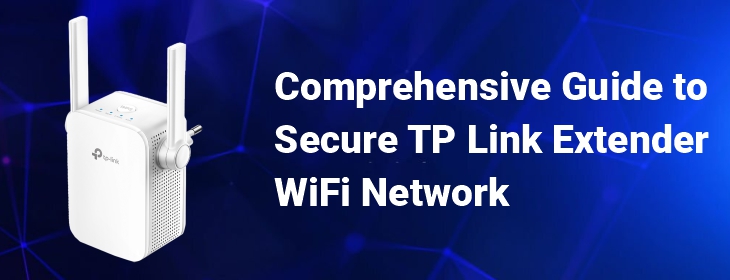
Comprehensive Guide to Secure TP Link Extender WiFi Network
Our increasingly technological world means that our homes are now filled with a number of devices that require an internet connection in order to work. Whether it’s a computer, laptop, smartphone, extender, or television, our dependency on the internet is rising day by day. This dependency has forced us access the internet via TP-Link extender on literally every smart device thereby opening the door to many security risks. Many people are simply unaware of how unsafe the network of their TP-Link extender is. You would never dream of leaving the front door of your house open, right? Then, why is the door of your home wireless network open to potential threats? It’s time to secure your TP Link extender WiFi network.
Are you not sure about how to do that? Well, worry not. Simply walk through the guidelines mentioned in this post and get to know about the different ways through which you can safeguard your TP Link extender WiFi network.
How to Secure TP Link Extender WiFi Network?
1. Change the WiFi Password
By default, your TP-Link wireless range extender comes assigned with a WiFi password and hackers can easily find it if they do some digging online. Therefore, the first and most important thing you should do in order to protect your TP Link extender network is to change its WiFi password to something more secure. In order to do so, you need to access the TP Link extender login
2. Disable SSID Broadcast
Another thing that you can do to secure your TP Link extender WiFi network is to hide its SSID. Wondering how to do that? Well, follow the step-by-step instructions given below:
- Switch on your PC.
- Open an internet browser.
- In the address bar of your internet browser, type the web address.
- Press the Enter key.
- You will land on the TP Link extender login page.
- Fill in the default username and password and click the Log In button.
- Once you have logged in, go to Settings > Wireless > Extended Network.
- Select the Hide SSID Broadcast option.
- Click the Save button.
- In a couple of seconds, your changes will become effective.
If you find this method a little difficult to implement, it is recommended that you opt for the Tether appto perform the same task.
3. Perform TP Link Firmware Update
Every TP-Link wireless range extender comes embedded with software known as firmware. Your device has this software inbuilt too. And it should be updated from time to time in order to keep your home network well protected. Thus, if you haven’t updated the firmware of your extender yet, do it now.
Not sure about how to go about the process? Well, relax. It’s not rocket science. However, if you still need help in updating the firmware of your extender, get in touch with our experts. Whether you have performed TP Link AC1200 setup or configured any other extender model, they will surely guide you on updating its firmware.
4. Pay Attention to the Device’s Location
Users often don’t realize that the location of their TP-Link wireless range extenders can have an impact on security. If your extender is placed near a door or window, it increases the chance of your WiFi network being hacked by an unauthorized user.
Thus, in order to secure your TP Link extender WiFi network, better place your device in the centermost location of your house.
Bonus: Turn Off Your TP-Link Extender When Not in Use
Yes, this tip sounds a little too easy to protect your TP Link extender from potential threats, but trust us; you won’t regret taking its help.
Your wireless range extender does not need to be running 24 hours a day, seven days a week. Therefore, whenever you are in no need of your extender’s network or are planning to step out of the house, consider turning it off.
Wrapping Up
Learning how to secure your TP Link extender WiFi network is an important step you should take to ensure that your data is safe from hackers. We hope that after walking through this post, you will be able to safeguard your home network with ease. On the off chance you still need help in doing so, feel free to reach out to our technical experts.